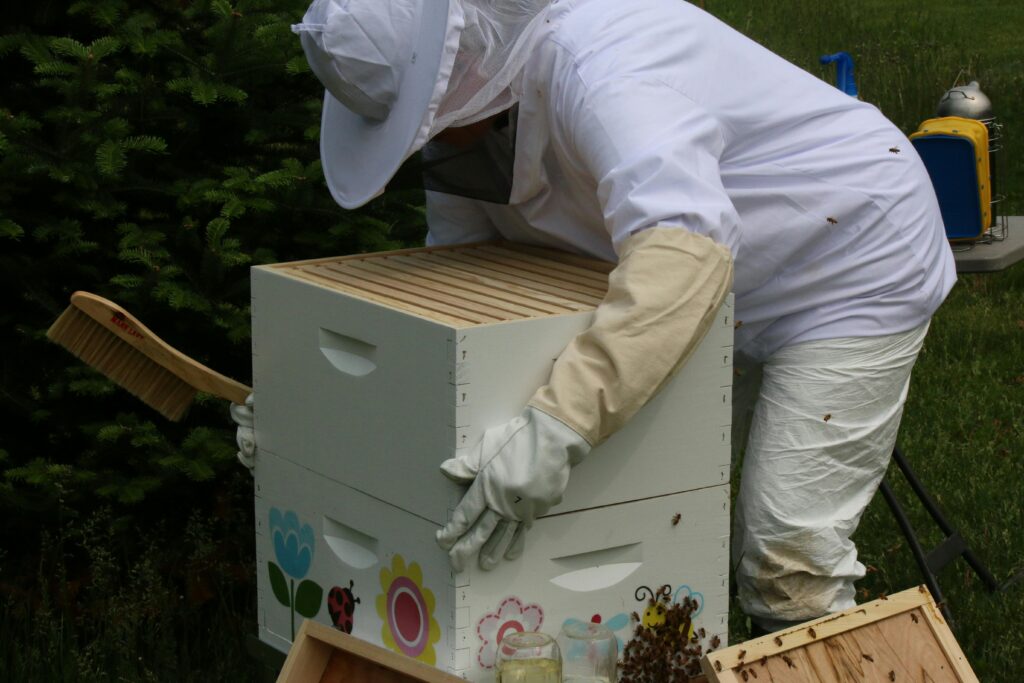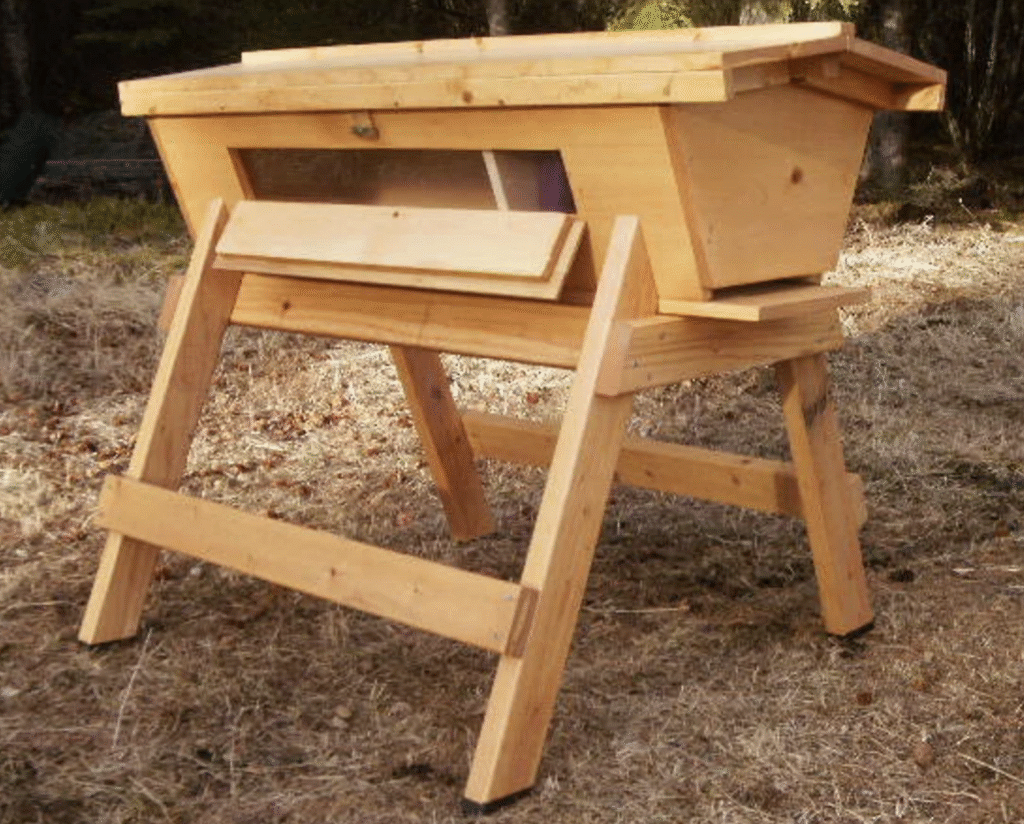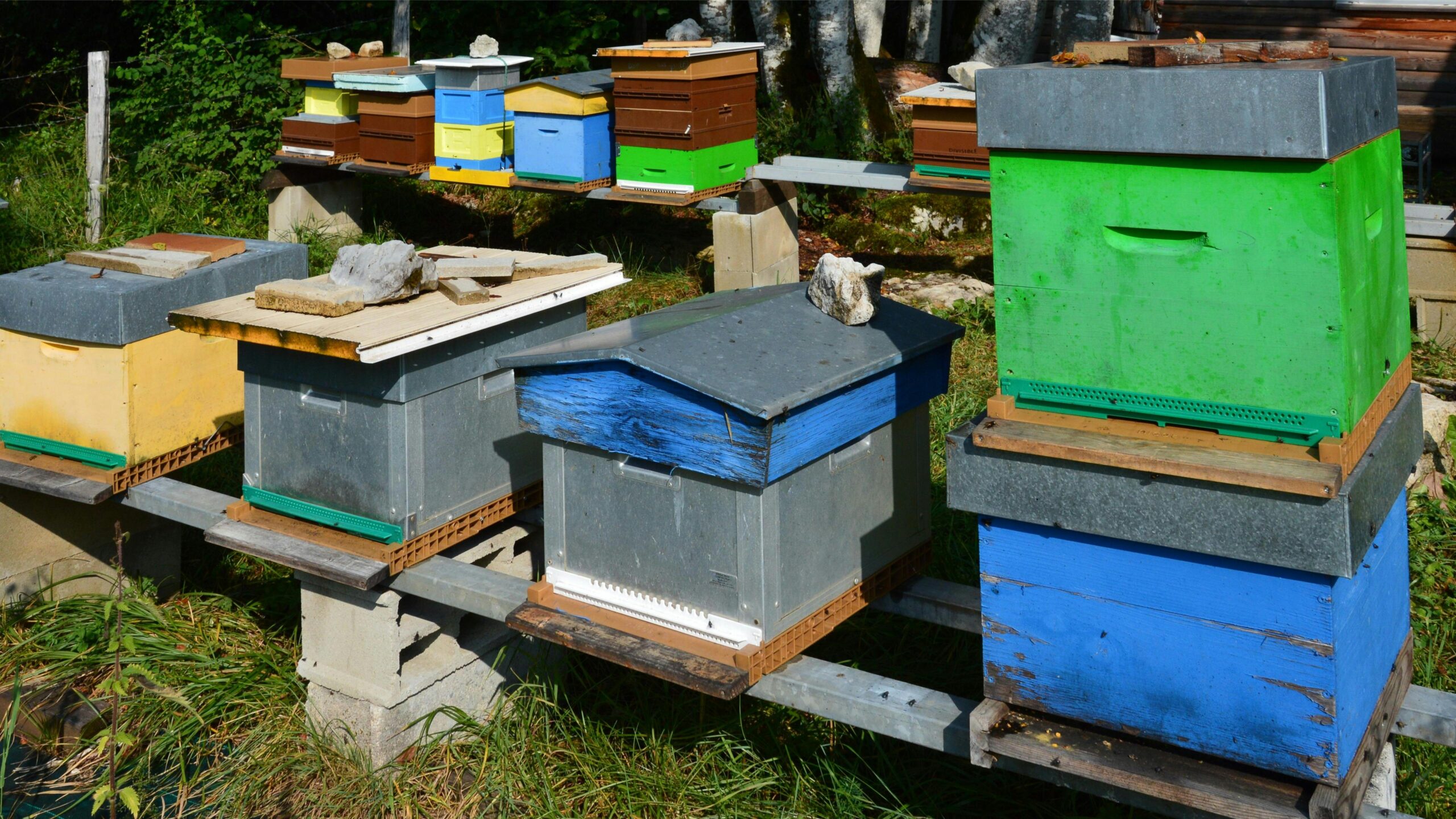When new beekeepers are getting started, one of the most confusing and debated decisions is which hive type to use. There are several different designs on the market, and each comes with its own pros, cons, costs, and learning curves. While the Langstroth hive remains the most common in the United States, alternatives like the top bar and horizontal hives have growing appeal. This article walks through the primary hive types, the differences between them, and what to consider before choosing the best fit for your beekeeping goals.
Langstroth Hive
The Langstroth hive is the gold standard in American beekeeping. Developed in the mid-1800s, it uses vertically stacked boxes, each containing removable frames. These frames make inspections, honey harvesting, and mite treatments more manageable and scalable.
Langstroth hives come in 8-frame and 10-frame versions and can use deep, medium, or shallow boxes depending on the beekeeper’s needs. Deep boxes are generally used for brood, while mediums or shallows are common for honey supers. Migratory beekeepers favor Langstroth hives because of their modularity and compatibility with palletized transport setups.
Pros:
- Widely available and compatible with most commercial equipment
- Standardized frame sizes
- Easy to expand with additional boxes
- Supported by nearly all beginner beekeeping courses and mentors

Cons:
- Heavy when full of bees and honey
- Requires lifting and stacking
- Can become expensive with extra components
If you’re looking for community support, equipment availability, and proven methods, the Langstroth is a safe and reliable starting point.
Check out these Bee Castles on Amazon:
10 frame: 10-Frame Bee Castle (2 deeps, 2 mediums)
8-Frame Bee Castle (2 deeps, 1 medium)
Top Bar Hive

Top bar hives are horizontal hives shaped like a trapezoid, with bars laid across the top for bees to build natural comb. There are no frames, just simple bars, and the comb is not constrained by wooden sides or plastic foundation.
Beekeepers using top bar hives often use a crush-and-strain method to harvest honey, as it’s not practical to reuse comb after extraction. Swarm prevention can be more difficult due to the lack of modular box expansion. Overwintering success may also depend heavily on local climate and the beekeeper’s ability to manage ventilation and insulation.
Pros:
- Lower cost to build or buy
- No lifting of heavy boxes
- More natural comb-building environment for bees
Cons:
- Harder to manage and inspect
- Not compatible with most commercial gear
- Honey harvesting is more destructive to the comb
Top bar hives are great for beekeepers who want a hands-off, natural approach and aren’t as concerned with maximizing honey production.
Horizontal Hive (Layens and Long Langstroth)
Horizontal hives are gaining popularity for their blend of ease and scale. The Layens hive and the Long Langstroth are the most common types.
Layens Hive:
- Uses large, deep frames oriented horizontally
- Typically comes fully insulated and pre-built
- Requires minimal management once installed (outside of Integrated Pest Management practices for varroa mites and other pests)
- Ideal for climates with long, cold winters due to thermal stability
Long Langstroth Hive:
- Uses standard Langstroth deep frames in a horizontal format
- Easier for those transitioning from Langstroth vertical setups
- Popular among hobbyists wanting less lifting and more stability
- Allows frame compatibility with existing Langstroth gear
Pros:
- No heavy lifting
- Compatible with some standard components (especially Long Langstroth)
- Good for colder climates (especially insulated Layens)
Cons:
- More expensive upfront
- Harder to find parts or local support
- Longer horizontal layout may require more space in the apiary
For beekeepers with physical limitations or a preference for easier management, horizontal hives offer a solid alternative, particularly if honey volume isn’t the top priority. However, routine monitoring and Integrated Pest Management remain necessary for long-term colony health.
Flow Hive
The Flow Hive is a Langstroth-style hive with a special honey super that allows you to harvest honey by turning a key, which drains the honey directly into jars.
This innovation has gained popularity for backyard beekeepers and educators due to its ease of demonstration and reduced mess. However, it is important to recognize that the Flow Hive only simplifies honey harvesting, but it does not reduce the need for routine hive inspections or varroa mite management.
Pros:
- No need to open the hive or disturb the bees during harvest
- Minimal mess and cleanup
- Fascinating for observers and easy for backyard setups
Cons:
- High cost
- Limited to specific harvesting frames
- Can give a false impression of “no-maintenance” beekeeping
While visually appealing and innovative, the Flow Hive still requires the same hive inspections, pest management, and seasonal care as any other setup.
Choosing What’s Right for You
When selecting a hive, ask yourself these questions:
- Do you want maximum honey production or just enough for personal use?
- Are you comfortable lifting 40–60 pound boxes?
- Do you want to build or buy your equipment?
- Will you be working with local mentors who use a specific hive type?
- Are you planning to scale your beekeeping operation or stay small?
- Do you live in a climate that favors a specific hive design (e.g., insulated horizontal hives for cold winters)?
There’s no universal best hive. What matters is what aligns with your physical ability, interest level, goals, and available resources. Many new beekeepers start with Langstroth simply because it’s supported, standard, and flexible. From there, some branch out into other hive types as their confidence and curiosity grow.
Final Thoughts
Hive type is one of the foundational decisions you’ll make as a beekeeper, but it’s not irreversible. What matters most is how you manage the bees inside, not just the wooden box that houses them. Choose a hive that you’ll enjoy working with, that matches your goals, and that you can support with the tools and guidance available to you.
And remember, bees don’t read the catalogs or care what hive they’re in — they’ll do their job just fine if you do yours.
Resources:
